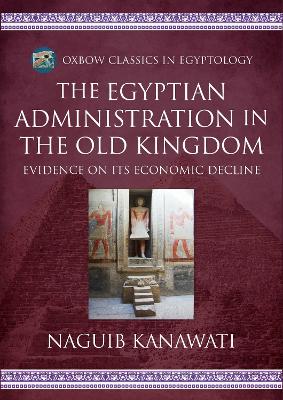A generally held belief is that there was a downward trend in the authority and power of the king and a corresponding increase in the influence of officials over the course of the Old Kingdom in Egypt. This could be seen reflected in the increasing size, complexity and lavishness of their tombs, the cost of which was generally met by the official himself. If the tomb owner died before completing his tomb, it was either finished by his son, or a close relative, or left in an unfinished state. It was most unusual for the king to provide an official with a complete tomb. The Old Kingdom administration was divided into three tiers of officials below the rank of Vizier, and the study analysed tombs of each class looking for trends that would indicate rank on the basis of costliness, and through time. It demonstrated a general downward trend in the financial resources among officials of the lower rank, with more fluctuating fortunes in the middle rank. This facsimile reissue of Kanawati’s authoritative study shows that the trend for the higher officials initially was up, followed by a general downward trend. Overall, by the end of the Fifth Dynasty the lower officials were unable to build tombs for themselves. The same happened to the middle ones early in the Sixth Dynasty, by the end of which the higher officials, including Viziers, did not have sufficient finance to construct their own tombs.
There is evidence that the administration at that time was inadequate: officials were dissatisfied and disinterested. While it is probable that it did not cause the downfall of the Old Kingdom, it resulted in a weak government, unable to cope with the wider economic and external problems of the end of the Sixth Dynasty.
- ISBN13 9798888571668
- Publish Date 15 August 2024
- Publish Status Forthcoming
- Publish Country GB
- Imprint Oxbow Books
- Format Paperback
- Pages 172
- Language English
